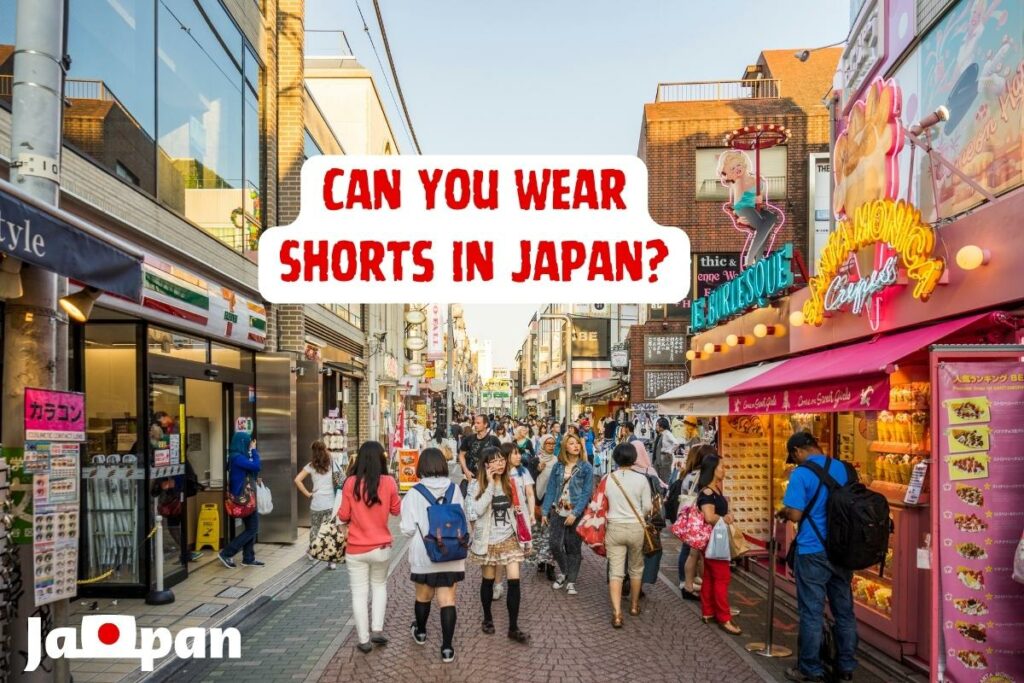Can You Wear Shorts in Japan? (2024!) What You Need to Know to Avoid Embarrassment
As the seasons shift and temperatures fluctuate, the shorts-wearing majority increases to include not only residents but also tourists worldwide
However, when it comes to visiting “Japan”, the crucial question on everyone’s mind is “Can You Wear Shorts In Japan?” This comprehensive guide’ll serve to answer this question and offer an in-depth perspective on fashion norms in Japan.
An Introduction to Japanese Fashion and Culture
Before we delve into the specifics of wearing shorts in Japan, it’s essential to comprehend the unique blend of tradition and modernity that defines Japanese culture. Japan is renowned for its distinct cultural norms which strongly influences its fashion sense
Although Japan is highly Westernized, it manages to maintain a delicate balance between contemporary fashion and traditional attire like Kimonos, Wagasa and Yukatas…
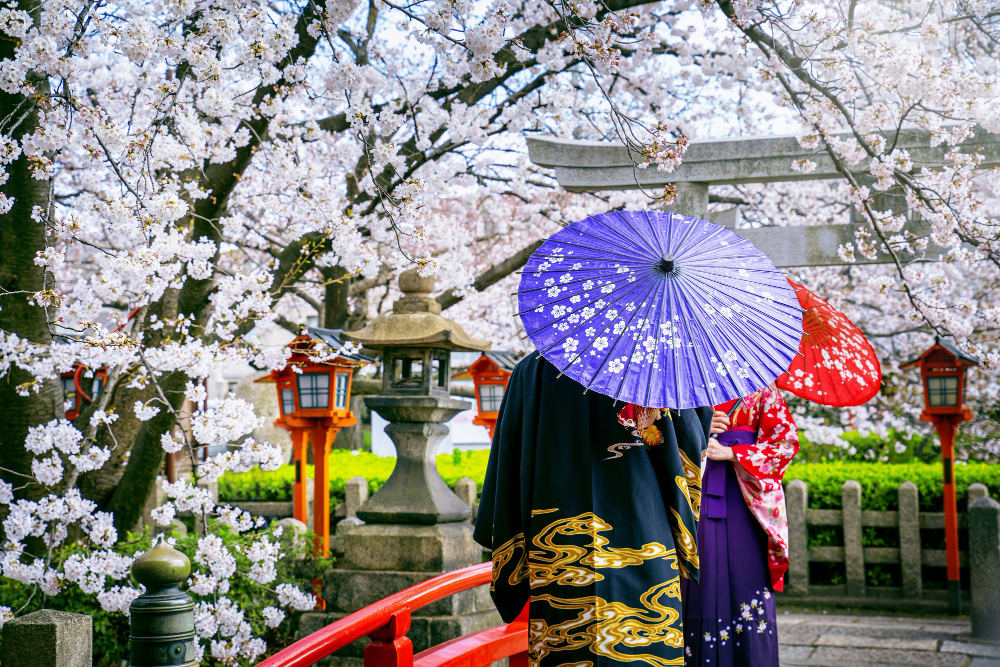
Japan is characterized by a keen sense of public decent. modesty and respect of others which is reflected in its dress code norms
For instance, it’s generally expected that people will not display too much skin in public, particularly women
This is the backdrop against which we need to consider the question “Can You Wear Shorts In Japan?”.
So, Can You Wear Shorts in Japan?
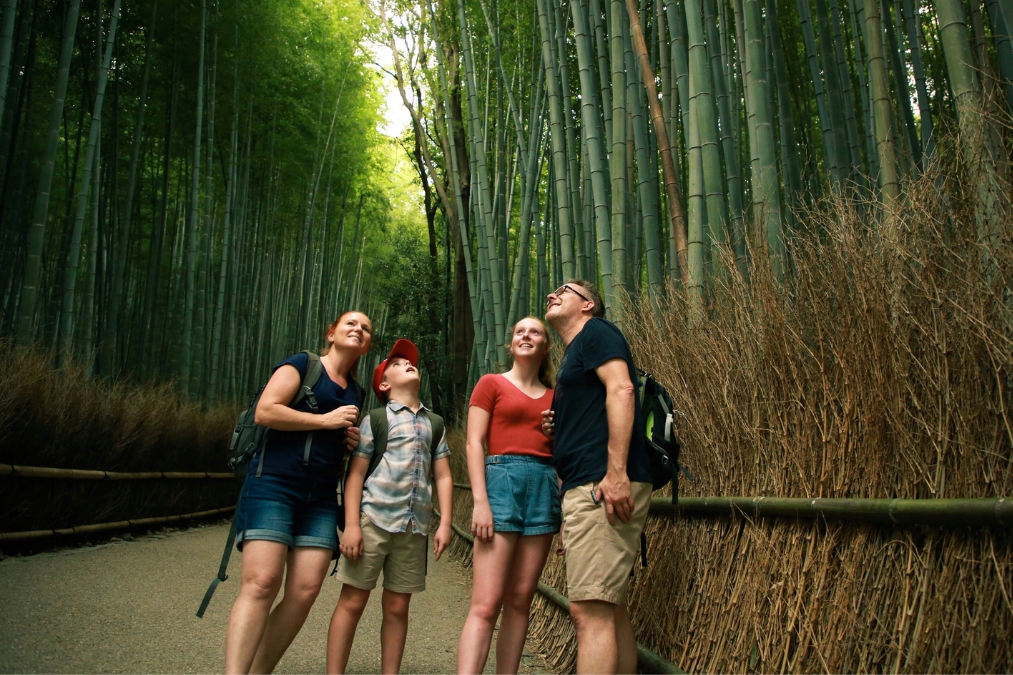
Now, let’s answer the question at hand “Can you Wear Shorts in Japan?” the short answer is Yes, you can. But it’s more complicated than a simple yes or no.
Firstly, the appropriateness of wearing shorts in Japan largely depends on the setting and context
In private spaces such as at a friend’s place, or in hotel areas such as private beaches and swimming pools. Shorts are a common sight, especially in warm weather
However, when it comes to public areas and cities, the guidelines are different. It is expected that clothing should cover the knees as excessively short or revealing clothing may draw unwanted attention
Although, Men have a bit more leeway than women, very short shorts are not recommended and could be seen as disrespectful.
For female travelers, Mid-length shorts or skirts are recommended for avoiding any uncomfortable situations, it’s true that you won’t be arrested for wearing short shorts in public, but you may attract unwelcome stares or be seen as disrespectful to the local culture.
You May Also Like:
Respect for Culture: Understanding The Japanese Dress Code
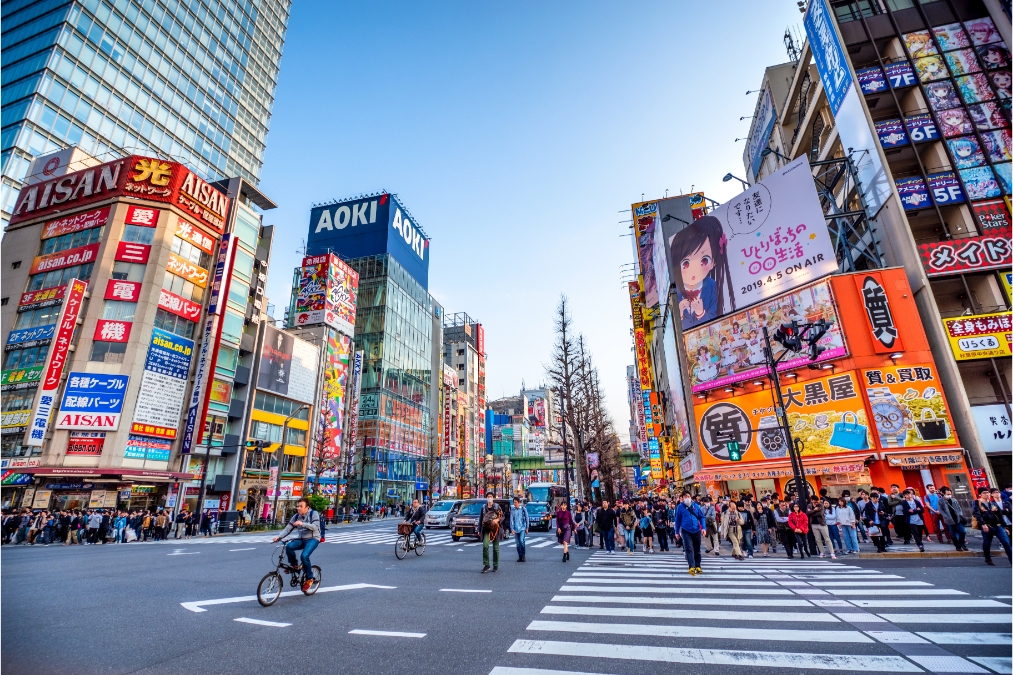
When you visit any country, it’s important to consider local customs and traditions, including the dress code.
Japan in particular, has a strong sense of decency when it comes to clothing. The Japanese people often dress modestly and fashionably, while choosing good quality, clean and well-tailored clothing.
-
Every Day Fashion
Japanese street style is a fascinating blend of modern fashion trends and traditional elements it’s not uncommon to see locals in a chic and fashionable look that highlights Japan’s global influence in the fashion industry.
In the context of shorts, it’s acceptable for both men and women to wear them, especially during the warmer months
But as the core principle of Japanese Fashion is to maintain modesty and respect for others, any clothing that could be seen as disrespectful of local customs and traditions should be avoided especially in more traditional or formal environments.
-
Professional and Formal Attire
In a professional or formal setting, the dress code is more conservative and still maintains the principle of modesty Men usually wear suits and ties, it’s also acceptable for a man to attend a business meeting without a jacket when it’s too hot
Women, on the other hand, should wear professional attire that is conservative This includes wearing formal dresses, long skirts or trousers
Shorts would generally be deemed inappropriate in such settings
-
Traditional Clothing
Japan is known for its beautiful traditional clothing including the kimono and yukata and these clothes are popular during festivals and special occasions.
Understanding Seasonal Dress Codes In Japan
Japan’s climate varies dramatically from one region to another and from season to the next which influence dress code expectations. Let’s delve deeper into Japan’s distinct seasons and their characteristics.
-
Spring In Japan
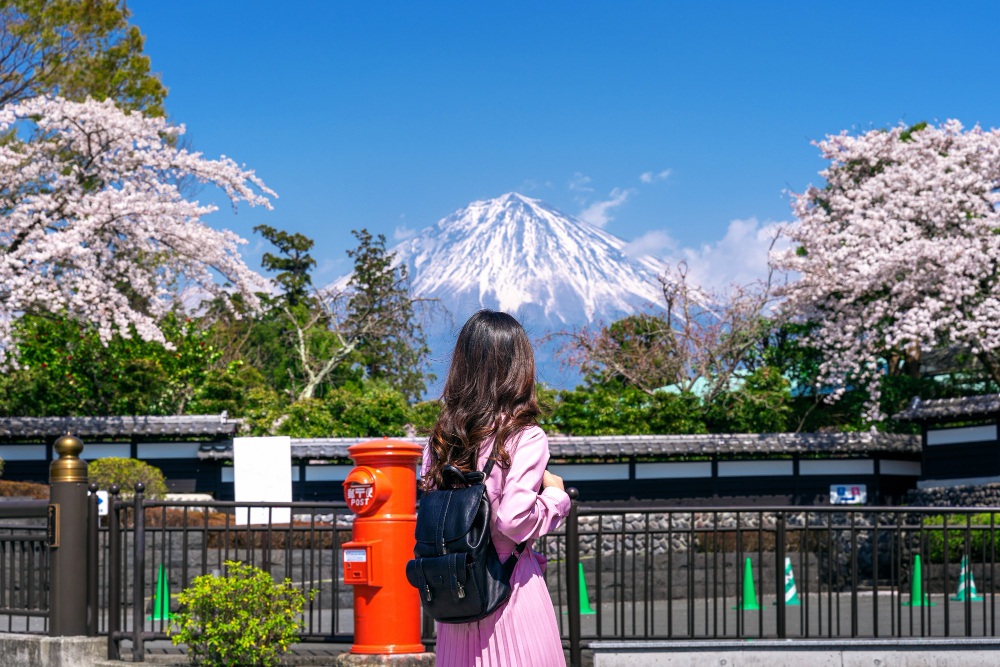
Spring in Japan, from March to May is marked by mild and pleasant weather with temperatures ranging from 50°F to 68°F (10°C to 20°C). During this season, Japan’s iconic cherry blossoms bloom, making it a popular time for visitors
Shorts can be comfortably worn during the latter part of Spring, but for cooler days and evenings, it’s always recommended to bring along additional layers like lightweight jackets, sweaters and other versatile clothing items for layering
-
Summer In Japan
Summer in Japan, from June to August is marked by quite hot and humid weather, especially in cities like Tokyo and Osaka
Daytime temperatures often rise above 85°F (29°C) and humidity levels can exceed 80%
During the hotter days of Summer, Shorts are not only appropriate but also practical due to the heat. However, be aware that June is typically the rainy season so it’s advisable to wear a light rain jacket or take an umbrella
-
Autumn in Japan

Autumn in Japan, from September to November is marked by mild and dry weather with temperatures ranging from 50°F to 70°F (10°C to 21°C).
This season is known for its vibrant autumn leaves “Koyo” drawing both locals and foreigners Shorts can be comfortably worn during the warmer days of Autumn.
As the season progresses, temperatures can drop particularly in the evenings so it’s recommended to pack additional pants and warmer clothes as well
-
Winter In Japan
Winter in Japan, from December to February” is marked by mild weather with temperatures usually ranging from 35°F to 54°F (2°C to 12°C)
However, the northern regions and the Japan Sea side experience heavy snowfall and colder temperatures that can drop below freezing. In these conditions, shorts could not be an appropriate go-to-option, warm clothing, instead are more suitable for these cold days, including coats, scarves, gloves, and thermal layers.
To Sum up, geographical location and weather conditions can influence dress code expectations. In central Japan where Tokyo and Kyoto are located, experiences hot and humid Summers, making shorts appropriate to be worn during warmer days
However, in northern regions like Hokkaido, winters are long and harsh which necessitates to shift from wearing shorts to pants
Dress Code Etiquettes: Where Wearing Shorts Might Be Appropriate or Inappropriate
When considering whether to wear shorts or not in Japan, it’s crucial to take into account the settings you’ll be visiting. Let’s Consider Some of Them.
-
Public Areas and Cities
In major cities like Tokyo, Osaka or Yokohama and popular touristic Zones, locals are used to seeing tourists, who might have different clothing norms. The Japanese street style will be a fascinating blend of Western and Japanese styles
In the context of shorts, it’s perfectly acceptable to wear them in these social settings and especially during warmer days
However as Japan is a country where modesty is still valued particularly in dress, it’s important to remember that revealing clothes are not generally the norm, especially in public areas and large cities
Remember that excessively short or revealing garment may draw unwanted attention
-
High-End Restaurants
In upscale restaurants and dining establishments the dress code generally leans towards smart casual or formal and shorts are inappropriate for such places
-
At Temples and Shrines
Japan is known for beautiful places of worship like shrines and temples, many of which are significant cultural heritage sites
In these sacred places, women are typically required to cover their arms and knees and to dress modestly out of respect
Inappropriate attire for visiting such places would include short shorts, sleeveless tops and any clothing that show much skin
-
Professional Settings
Japan’s work culture is known for its formality In a professional setting, the Japanese typically wear conservative attire
The norm in these environments is business suits and button-up shirts for Men and conservative dresses or blouses and skirts for women. Shorts would generally be deemed inappropriate in such settings
-
Schools and Universities
In educational institutions, there is a mix of dress codes. Some schools require uniforms while others allow casual clothing. At universities, students are free to wear any casual dress but not overly So, Shorts are acceptable, particularly in Warm weather.
-
Restaurants and Bars
In upscale restaurants and some bars, the dress code generally leans to wards semi-formal Casual restaurants and izakayas (Japanese pubs) generally have a more relaxed dress code, so normally, shorts would be considered appropriate in such places, especially during summer months
-
Traditional or Religious Sites
Religious sites such as temples, have stricter dress codes, It’s important to dress modestly. Shorts are typically acceptable but they should be longer and not very shorter
It’s also important to remember that revealing clothes are not generally the norm
-
Onsen (Hot Spring)
Japan’s onsens are an essential part of its culture. In these environments, all bathers are typically naked, swimwear including shorts is not allowed as it’s believed to interfere with the cleanliness of water.
Small towels are provided for modesty when you are out of the water
-
Festivals and Events
Japan’s festivals are also an essential part of its culture. In such events, attendees often wear traditional clothing such as yukatas (summer kimonos) but it’s not uncommon to see people in Western clothes Locals and tourists alike can put on shorts in condition that they’re not overly revealing
Practical Tips for Wearing Shorts in Japan
Having discussed the importance of respectful dressing, here are some practical tips to keep in mind
-
Consider the Length
While shorts are accepted in Japan, their length matters, avoid extremely short shorts, especially in more conservative or rural areas as you might attract unwelcome attention or stares. Locals may view your attire as disrespectful which could lead to uncomfortable encounters Instead opting for shorts that are knee-length or slightly above is a safe bet.
-
Pairing Shorts with Appropriate Clothing
To maintain a balanced look, you can pair your shorts with appropriate clothing for example, if your shorts are shorter, consider wearing a more modest top
-
When in Doubt, Carry a Cover-up
If you plan to visit a religious site or formal venue later in the day, the safest bet to ensure you are prepared for any unexpected dress code requirements is to carry a light pair of pants or a skirt as a cover-up
-
Taking a Cue from the locals
observing what others around you are wearing is a good way to gauge what’s acceptable in the current context
Conclusion:
So, to circle back to the question “Can You Wear Shorts In Japan” Yes, you can but the climate, the social setting and the events matter. In public areas and cities, shorts are acceptable
However, in more conservative and rural areas, it’s preferable to dress more modestly
Respecting, the Japan dress code is not only a mark of respect for the local culture, traditions and customs but as a tourist, it can enhance your experience in the country
After all, part of the joy of travel and living abroad is understanding new cultures.
So while you can’t wear shorter shorts in particular places in Japan; remember that this rule is part of a unique tradition of respect and sense of modesty. By following the dress code you’re ensuring that you’ll be welcomed and respected by locals.
Tags: #Is It Okay to Wear Shorts in Japan? #Do people wear shorts in Japan #Is it appropriate to wear shorts in Japan?




